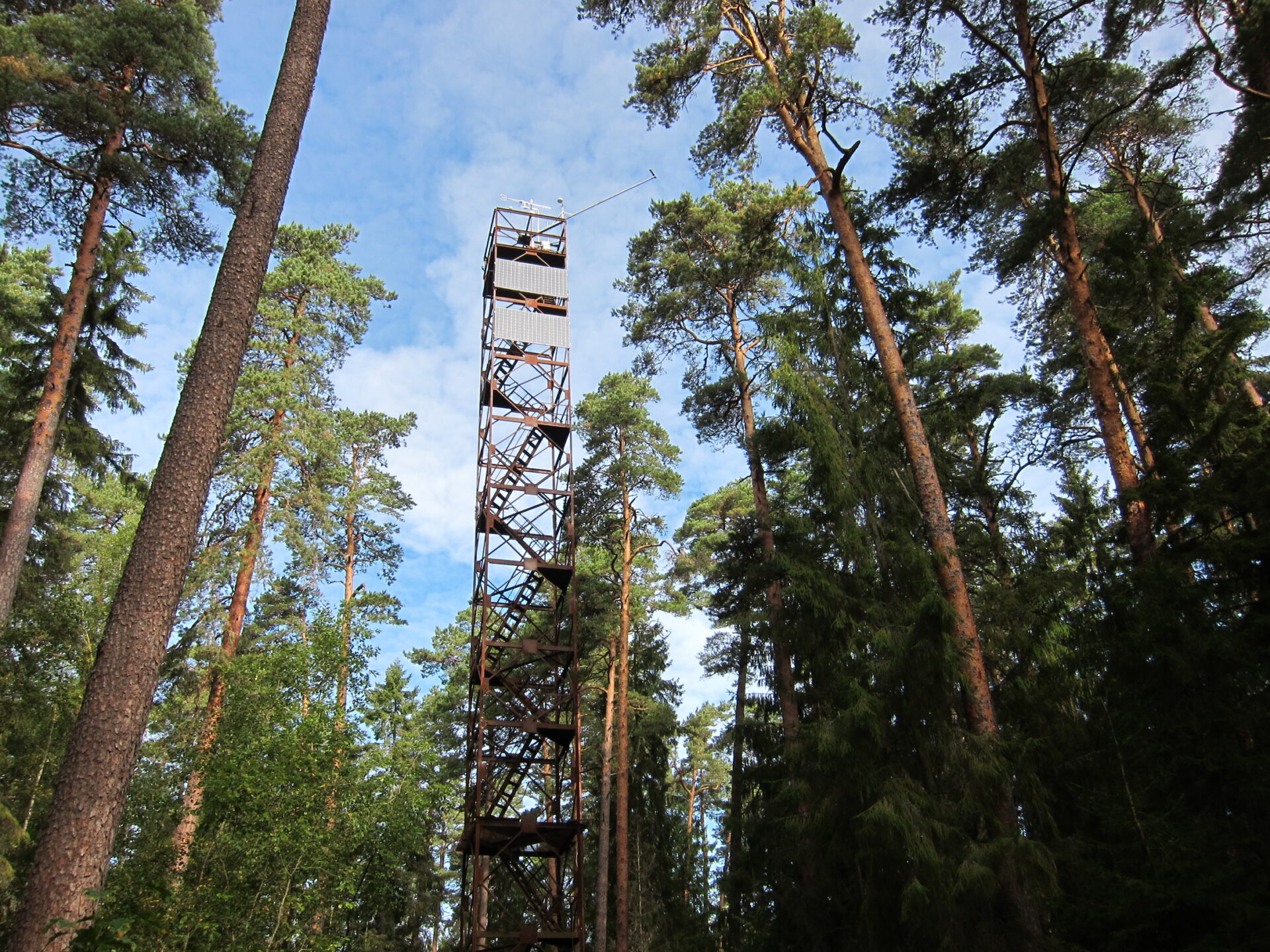
Biometeorology Lab
Agali II site
Forestry-drained peat.
PI: Ülo Mander, ulo.mander@ut.ee
- Challenge: The site in Agali is located in the Järvselja Training and Experimental Forestry District, Estonia. This is a 40-50 years old Downy birch forest on a N-rich peat and together with 8 other drained peatland forest sites in the neighborhood with existing dataset of greenhouse gas (GHG) fluxes and relevant environmental parameters (2013-2016) can be considered as a Järvselja Living Lab. The SMEAR Estonia station which is also located in the region can have a supporting role.
- Solution: The Agali Downy birch peatland site is planned for the detail process analysis of the impact of water level manipulations on the greenhouse gas emissions. It is equipped with eddy tower (Fig. 2 for all 3 GHGs (LiCor for N2O + Aerodyne for CH4 & N2O), automated chambers for soil fluxes of all 3 GHGs (Picarro-connected) and tree stem chambers at 4 heights (Fig. 2), and two experimental plots (3 replicates in each) for water level manipulation (flooding and drying) in combination with freezing-thawing experiments.
- Expected outcomes: Elevated water level will reduce peat mineralisation hence CO2 flux from the soil. The experimental plots (Fig. 4) enable to analyse the effect of soil moisture (water level) and freezing-thaw cycles on GHG gas fluxes. Isotope analyses (15N and 13C) and microbiome studies will be used for partitioning fluxes between the N2O source processes and CH4 production and consumption.
- Transferability: To analyse the long-term impact of the flooding on all ecosystem compartments, we plan to flood the forest section in the neighbourhood of eddy tower. The adjacent Apna river can be used for that purpose. The proposed method is relevant in all countries where peatlands have been drained for forestry.
- Size: 3,5 ha


